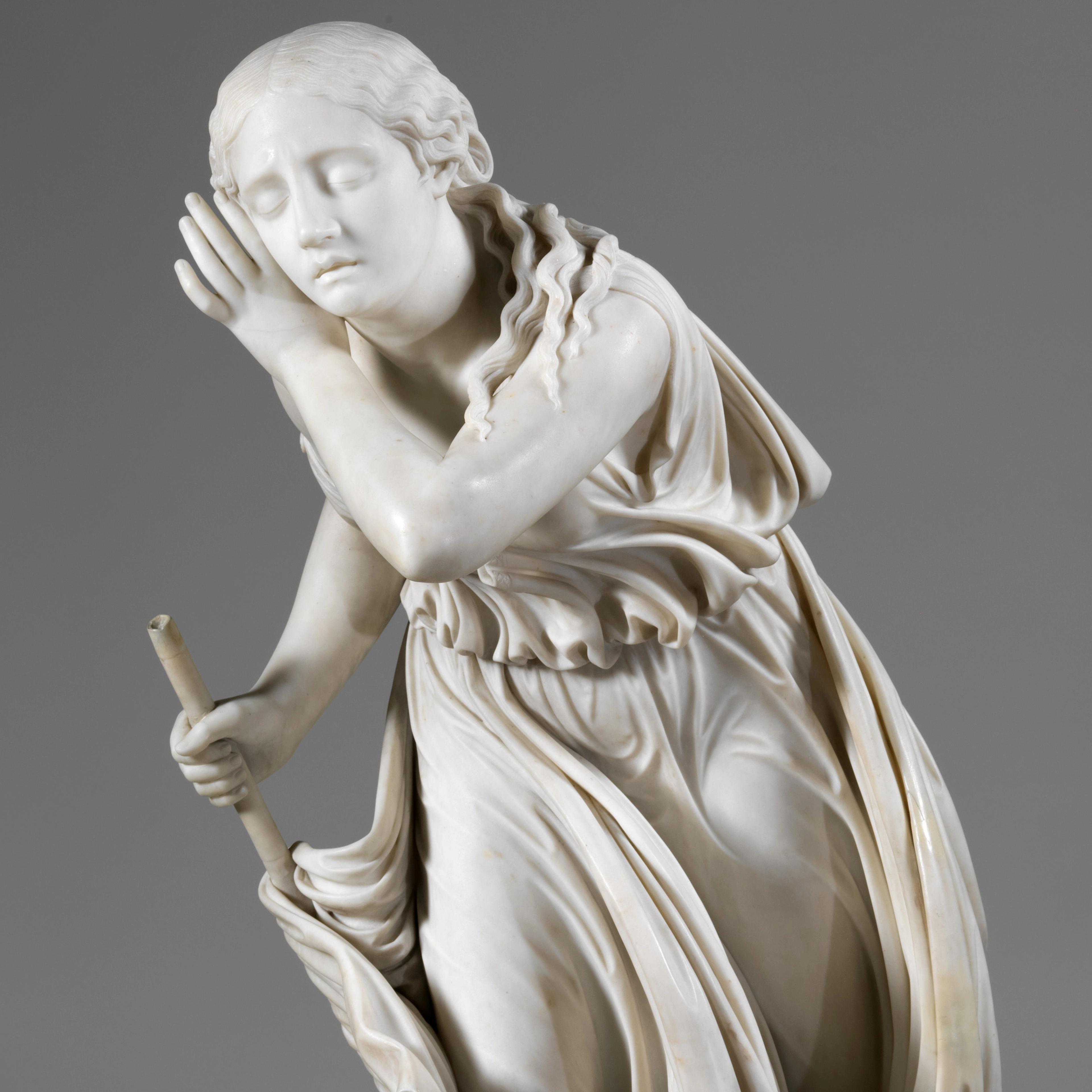Ancient Greeks and Romans used a mnemonic device called a "memory palace" to help them remember the complicated and numerous details of their orations. They would visualize the intricacies of the stories by constructing in their minds an elaborate, yet familiar, place: a memory palace.
Sound artist, master storyteller, and MetLiveArts Artist in Residence Nate DiMeo—whose popular podcast, The Memory Palace, paints vivid, poetic pictures of moments in American history—will animate The Met throughout the 2016–17 season, interrogating the collection to draw out the revealing secrets and stories of the art.
Newly commissioned episodes of The Memory Palace—each one itself a work of art—focus on The American Wing and the Museum at large.
Some objects have been relocated since publication. Please visit The Met Collection online for up-to-date gallery information.
Listen
These episodes are also available at thememorypalace.us and through all podcasting platforms, including Apple Podcasts.
This episode is best experienced in gallery 760 in The American Wing. If you can't visit the Museum in person, you might want to take a look at Emanuel Leutze's Washington Crossing the Delaware (1851), Albert Bierstadt's The Rocky Mountains, Lander's Peak (1868), and Jules Tavernier's Dance in a Subterranean Longhouse at Clearlake, California (1878).
Published October 6, 2016. Written and produced by Nate DiMeo, with engineering assistance from Kathy Tu and research assistance from Andrea Milne. Its executive producer is Limor Tomer, general manager of Live Arts, The Metropolitan Museum of Art.
This episode is best experienced standing by case 23 ("Blown-Molded Glass, 1810–75") in gallery 706 in The American Wing. If you can't visit the Museum in person, you might want to take a look at the pocket bottle (1815–40), John Singer Sargent's Madame X (Madame Pierre Gautreau) (1883–4), and Frank Duveneck's Tomb Effigy of Elizabeth Boott Duveneck (1891).
Published October 6, 2016. Written and produced by Nate DiMeo, with engineering assistance from Kathy Tu. Its executive producer is Limor Tomer, general manager of Live Arts, The Metropolitan Museum of Art.
This episode is best experienced in gallery 735 in The American Wing. If you can't visit the Museum in person, you might want to take a look at the John Vanderlyn's Panoramic View of the Palace and Gardens of Versailles (1818–19).
Published November 21, 2016. Written and produced by Nate DiMeo, with engineering assistance from Kathy Tu and research assistance from Andrea Milne. Its executive producer is Limor Tomer, general manager of Live Arts, The Metropolitan Museum of Art.
This episode is best experienced in gallery 755 in The American Wing. If you can't visit the Museum in person, you might want to take a look at the Prince Demah Barnes's Portrait of William Duguid (1773).
Since the publication of this episode, the Portrait of William Duguid has been relocated from gallery 747 and is now on view in gallery 755.
Published February 15, 2017. Written and produced by Nate DiMeo, with engineering assistance from Kathy Tu and research assistance from Andrea Milne. Its executive producer is Limor Tomer, general manager of Live Arts, The Metropolitan Museum of Art.
This episode is best experienced in gallery 131. If you can't visit the Museum in person, you might want to take a look at the Temple of Dendur (ca. 10 B.C.).
Published April 17, 2017. Written and produced by Nate DiMeo, with engineering assistance from Elyssa Dudley and research assistance from Andrea Milne. Its executive producer is Limor Tomer, general manager of Live Arts, The Metropolitan Museum of Art.
This episode is best experienced in gallery 719 in The American Wing. If you can't visit the Museum in person, you might want to take a look at the Ballroom at Gadsby's Tavern, Alexandria, Virginia (1792–93).
Published June 9, 2017. Written and produced by Nate DiMeo, with engineering assistance from Elizabeth Aubert. Its executive producer is Limor Tomer, general manager of Live Arts, The Metropolitan Museum of Art.
This episode is best experienced in gallery 731 in The American Wing. If you can't visit the Museum in person, you might want to take a look at two sculptures by Edmonia Lewis, Hiawatha (1868) and Minnehaha (1868).
Since the publication of this episode, the two sculptures by Edmonia Lewis have been relocated from gallery 759 and are now on view in gallery 731.
Published September 5, 2017. Written and produced by Nate DiMeo, with engineering assistance from Elizabeth Aubert. Its executive producer is Limor Tomer, general manager of Live Arts, The Metropolitan Museum of Art.
This episode is best experienced in The Henry R. Luce Center for the Study of American Art.
Published September 5, 2017. Written and produced by Nate DiMeo, with engineering assistance from Elizabeth Aubert. Its executive producer is Limor Tomer, general manager of Live Arts, The Metropolitan Museum of Art.
More to Explore: Worsham-Rockefeller Dressing Room
This special episode of The Memory Palace coincided with the opening of the Worsham-Rockefeller Dressing Room in The American Wing in December 2015. It shares some of the most luscious details about the life of Arabella Worsham (ca. 1850–1924)—mistress (and later, wife) of railroad magnate Collis P. Huntington—as well as some of the secrets she may have guarded. This episode is best experienced in gallery 742.
3902. Worsham-Rockefeller Dressing Room
This podcast is made possible by the Clara Lloyd-Smith Weber Fund.
Published December 16, 2015. Written and produced by Nate DiMeo, with a musical score by Jimmy LaValle of the Album Leaf. Its executive producer is Limor Tomer, general manager of Live Arts, The Metropolitan Museum of Art.
About The Met's Artist in Residence Program
Over the past four years, each MetLiveArts season has featured an artist in residence from a different discipline—music, theater, and multimedia. These yearlong residencies at The Met challenge artists to reflect on and be inspired by The Met's collection and spaces, and work closely with curators, conservators, and researchers throughout the Museum.
This residency is made possible by the Chester Dale Fund.
